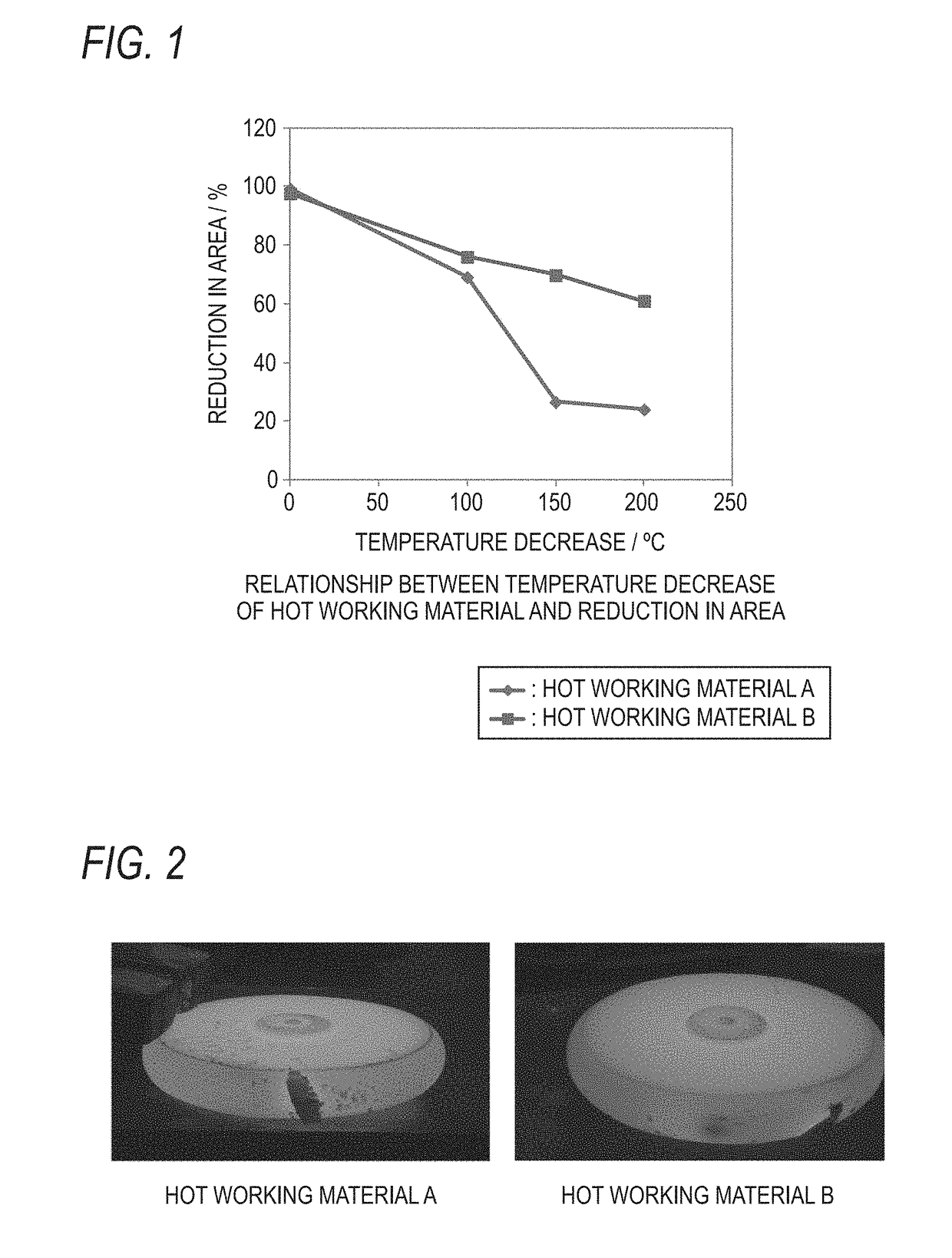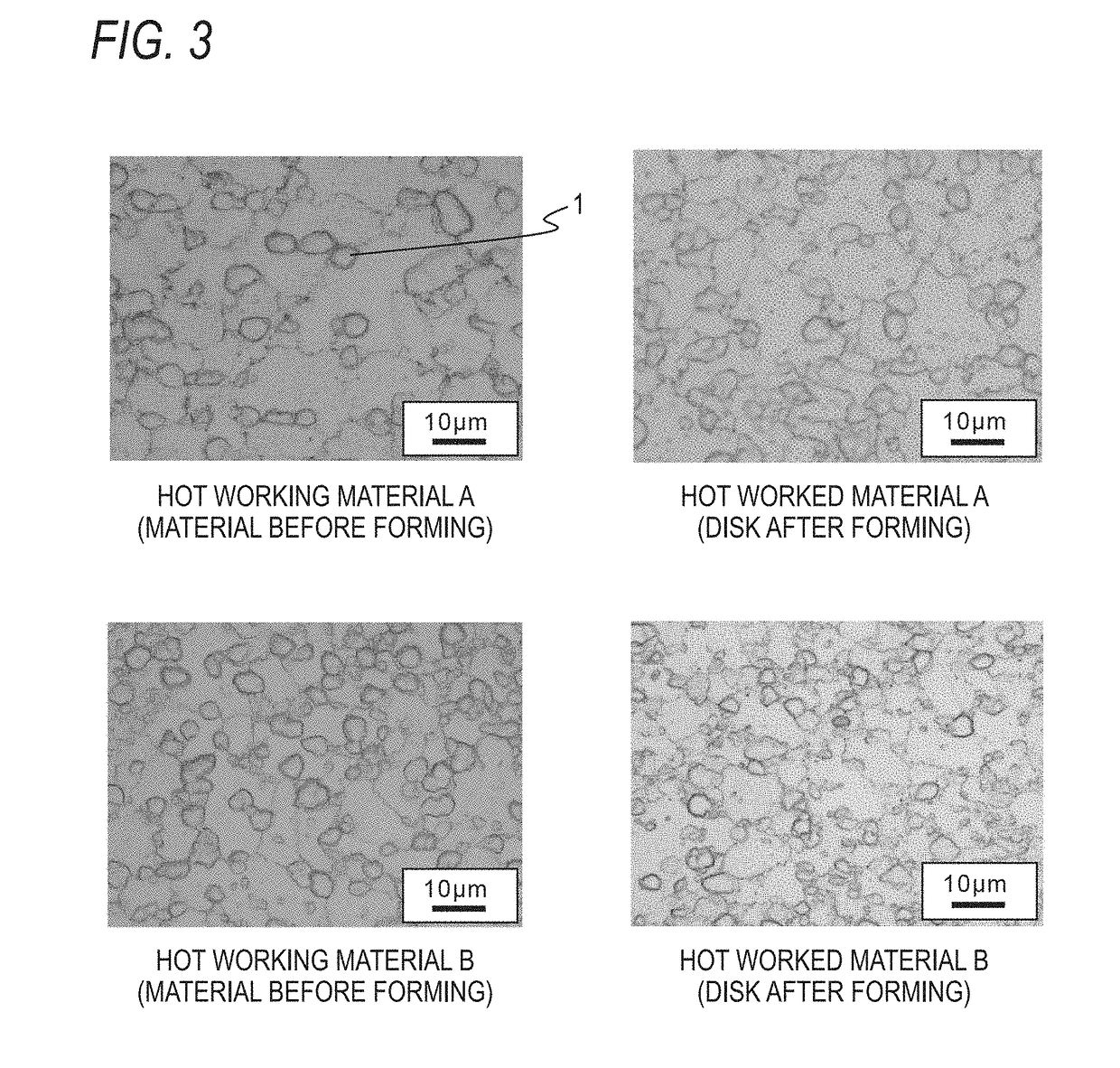METHOD OF PRODUCING Ni-BASED SUPERALLOY
a superalloy and ni-based technology, applied in forging/pressing/hammering machines, manufacturing tools, forging/pressing/hammering apparatus, etc., can solve the problems of cracks, hot working, and become much more difficult to strictly control the grain size in production, so as to improve the yield of materials and increase the operation temperature. , the effect of high strength
- Summary
- Abstract
- Description
- Claims
- Application Information
AI Technical Summary
Benefits of technology
Problems solved by technology
Method used
Image
Examples
example 1
[0067]In order to confirm the effect of the present invention by using a hot working material for a large-size Ni-based superalloy, two hot working materials A and B were prepared. The hot working material A is a Ni-based superalloy corresponding to Udimet720Li. The hot working material B is a Ni-based superalloy corresponding to one disclosed in Patent Document 1. The hot working materials A and B are alloys having a chemical composition on which performing hot working is most difficult from a viewpoint of the amount of the γ′ phase, among superalloys for hot forging. For each material, hot forging and mechanical working were performed on a columnar Ni-based superalloy ingot which had been produced by using a vacuum arc remelting method which is an industrial melting method. The hot working materials A and B are formed to have a shape of φ203.2 mm×400 mmL as dimensions. Chemical composition of the hot working materials A and B are shown in Table 1.
TABLE 1(mass %)MaterialCAlTiNbTaCr...
example 2
[0071]In order to confirm the effect of the present invention, a forming work in which a disk material which had dimensions equivalent to those of the practical product and has a pancake shape was produced was performed on the hot working materials A and B. The materials were heated to 1100° C. in an atmospheric furnace, and then pressure of 80% was applied under a condition of a strain rate of 0.01 / second in a free forging press machine in which the temperature of a die was set to 900° C. Thereby, a pancake-like disk having an outer diameter of about 470 mm and a height of 80 mm was formed. The following Table 3 shows the heating temperature in a forging process and a disk surface temperature when forging is ended.
TABLE 3Heating temperatureMaterial surfaceMaterialDimensions(° C.) of hot workingtemperature (° C.) whendimensions(mm) afterMaterialmaterialforging is ended(mm)forgingA11001009φ203.2 × 400φ477 × 80.5B11001002φ203.2 × 400φ477 × 80.0
[0072]According to Table 3, it is implied...
PUM
| Property | Measurement | Unit |
|---|---|---|
| temperature | aaaaa | aaaaa |
| temperature | aaaaa | aaaaa |
| temperature | aaaaa | aaaaa |
Abstract
Description
Claims
Application Information
 Login to View More
Login to View More - R&D
- Intellectual Property
- Life Sciences
- Materials
- Tech Scout
- Unparalleled Data Quality
- Higher Quality Content
- 60% Fewer Hallucinations
Browse by: Latest US Patents, China's latest patents, Technical Efficacy Thesaurus, Application Domain, Technology Topic, Popular Technical Reports.
© 2025 PatSnap. All rights reserved.Legal|Privacy policy|Modern Slavery Act Transparency Statement|Sitemap|About US| Contact US: help@patsnap.com



